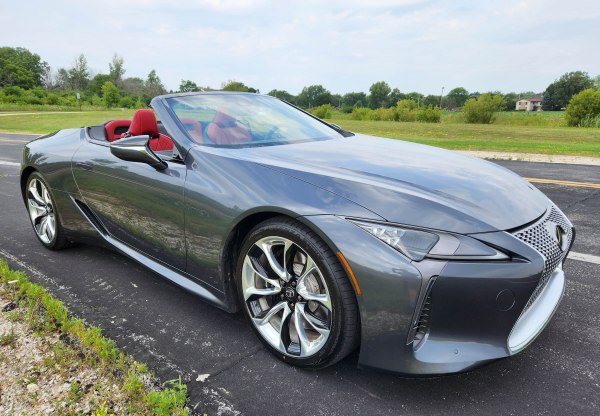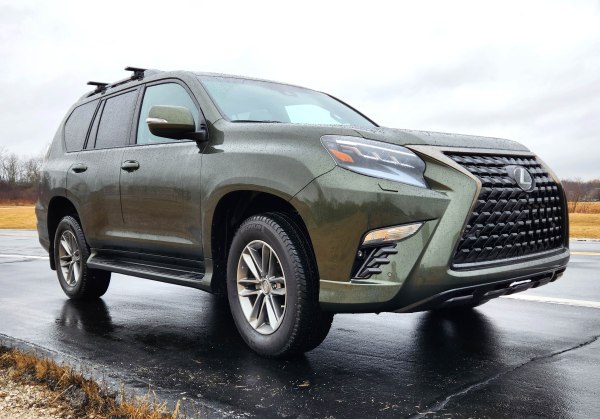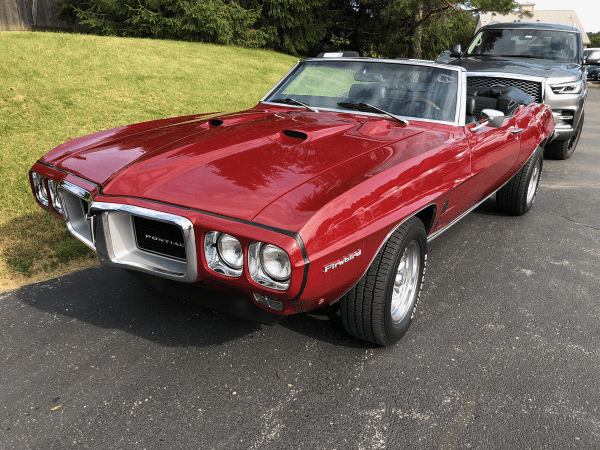Luxury Convertible's gutsy V8, drop-top are smooth operators ... Last time I drove the stunning Lexus LC 500 convertible I quoted Voltaire saying we must feel and be affected by beauty, not just see it. I don’t quote Voltaire often! But I’ve become spoiled by such luxury when it arrives in my driveway. Yet who... Continue Reading →
2023 Ford F-150 SuperCrew Tremor
New Tremor trim is an off-roading hot rod ... Apparently, Ford didn’t think there were enough F-150 choices and trims, hence the new Tremor pickup. To be clear, there are dozens of F-150 choices from the base with a standard cab to crew cabs to SuperCrew cabs. There also are off-roading and on-roading choices, along... Continue Reading →
2023 BMW X7 M60i
X7 a pulse-quickening luxury 3-row SUV ... BMW is one of the best automakers at straddling the line of performance and luxury and nowhere is that balancing act more challenging than the large SUV market. Yet BMW does just that with its X7, a big beauty that handles like a smaller sportier SUV or crossover,... Continue Reading →
2023 Lexus GX 460
Big-nosed, 3-row SUV feels old school, but remains a fun drive ... I’m beginning to feel a smidge like Little Red Riding Hood when it comes to new car and truck designs. My, what big grilles you have! Lexus’ full-size SUV, the GX 460 was one of the first to glom onto the giant schnoz... Continue Reading →
1969 Pontiac Royal Bobcat Grand Prix Model J
Auto World creates a rare souped up Ponty with a V8 ... Back in 1969 GM was in the midst of its popularity and market share dominance with Chevrolet, Oldsmobile, Buick, Cadillac and Pontiac cars all selling like Mary Jane at a Stones concert. But the tide was turning and the many stellar designs of... Continue Reading →
Car Spot: 1970 Chevelle SS
Classic 70's muscle car Even though new EPA emissions rules were just around the corner, car companies still managed to make fun cars like this weeks car spot, a 1970 Chevelle SS. The name "chevelle" has been speculated as influenced by the gazelle and Chevrolet combined, as a smaller sedan to the Impala. Doing 0-60... Continue Reading →
Car Spot: 1969 Firebird Convertible
A better buy than its Camaro cousin? So which is better, the Camaro or the Firebird? You'd get great arguments for both of them. The owner of this 1969 Firebird convertible would certainly argue for his ride. This one is cherry and I've seen it here before at the golf course that I work at... Continue Reading →
2022 Jeep Grand Wagoneer Obsidian 4×4
Grand is the key word in Jeep's new full-size luxury SUV ... Jeep’s new Grand Wagoneer, its first GW since 1991 is simply too much, and that applies to price, screens, and luxury features. Of course, that’s exactly the market Jeep is going after with the Grand, over-the-top high-end luxury. So I’ll warn you right... Continue Reading →
Johnny Lightning 1:64 Muscle Cars & Showcase
Latest Lightning 6-packs loaded with color, detail ... The recent Muscle Cars release and a few older JLs in the new Auto World case. I find it sort of amazing that muscle cars from the 1960s through the ‘80s remain so incredibly popular with collectors, both of 1:1 cars and those of us who love... Continue Reading →
2022 Jeep Wagoneer Series II
Giant Wagoneer moves Jeep WAY upscale ... Jeep’s massive new Wagoneer is its latest attempt at a halo vehicle, an upscale mount to lure hoity toity suburbanites looking for their third or fourth SUV to put in their 4-stall garage. Makes sense, profits are huge at this end of the market, just ask ALL the... Continue Reading →









